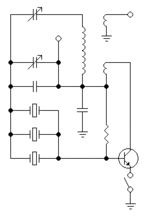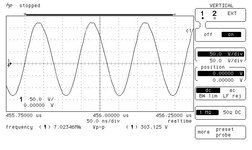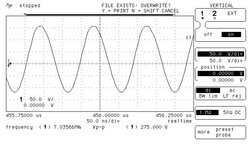neazoi
Advanced Member level 6
Hi, this self-exited oscillator attached, is a redrawn version of this **broken link removed** including some modifications.
I noticed that the primary of the transformer has a very high RF voltage at one side, which is expected.
A crazy thought I am interested in, is using this thing as a HV generator for powering up small tubes. In contrast to mains frequency inverters, this works on RF.
Now, I have measured the unloaded voltage and it is much more than 250v (the limit of my scope) and the waveform is a nice looking sinewave.
So I would like to find out how can I measure the current capability of the HV that it can provide, so I know what tubes can I power up with this thing. The oscillator draws 500mA-1A depending on the setting, at 24v.
Any ideas?
I noticed that the primary of the transformer has a very high RF voltage at one side, which is expected.
A crazy thought I am interested in, is using this thing as a HV generator for powering up small tubes. In contrast to mains frequency inverters, this works on RF.
Now, I have measured the unloaded voltage and it is much more than 250v (the limit of my scope) and the waveform is a nice looking sinewave.
So I would like to find out how can I measure the current capability of the HV that it can provide, so I know what tubes can I power up with this thing. The oscillator draws 500mA-1A depending on the setting, at 24v.
Any ideas?
Attachments
Last edited:


